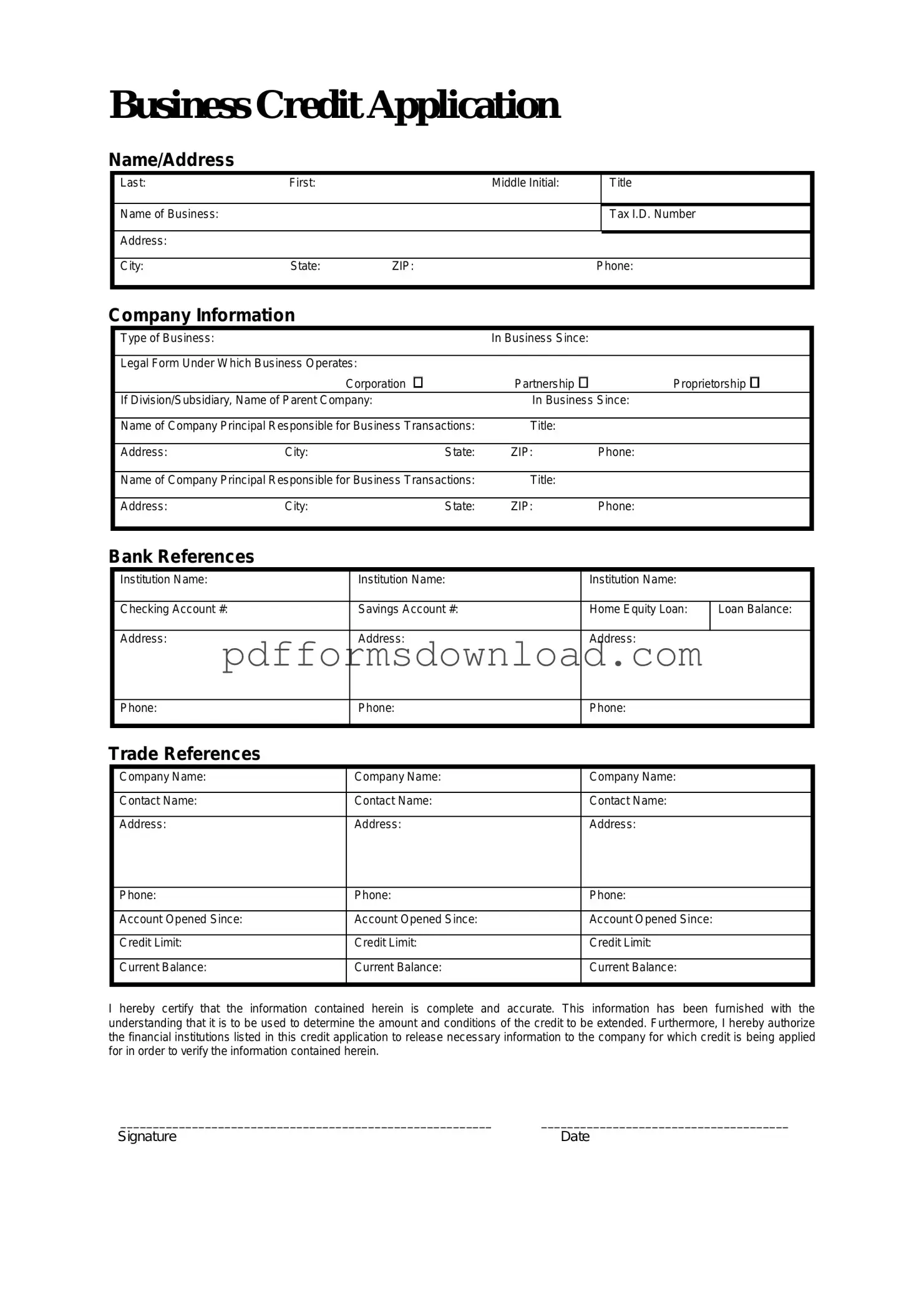What is a Business Credit Application form?
The Business Credit Application form is a document that businesses fill out to apply for credit with a supplier or lender. It typically requires information about the business, such as its legal name, address, and type of business entity. Additionally, the form may ask for financial details, such as annual revenue and bank references. This information helps the creditor assess the creditworthiness of the business before extending credit terms.
Who needs to fill out the Business Credit Application form?
Any business seeking to establish a line of credit with a supplier, vendor, or financial institution should complete this form. Whether you are a startup looking to purchase inventory or an established company seeking better payment terms, the application serves as a crucial step in securing credit. It’s important for both small businesses and larger corporations to provide accurate and complete information to facilitate the approval process.
What information is typically required on the form?
While the specific details may vary by lender or supplier, most Business Credit Application forms will require basic information about your business. Expect to provide your business name, address, and contact information. You will also need to include your federal tax ID number, the type of business structure, and financial information such as annual revenue and credit references. Some forms may ask for personal guarantees from owners, especially for smaller businesses.
How is the information on the Business Credit Application used?
The information you provide on the application is used to evaluate your business's creditworthiness. Creditors will assess your financial stability, payment history, and overall risk level. This evaluation helps them decide whether to approve your application and what credit terms to offer. Accurate and honest information is crucial, as discrepancies could lead to delays or denial of credit.
What happens after I submit the Business Credit Application?
Once you submit the application, the creditor will review the information provided. This process may take anywhere from a few days to a couple of weeks, depending on the lender's policies and the complexity of your application. If approved, you will receive a notification outlining the credit terms, such as the credit limit and repayment schedule. If denied, you may receive feedback on why the application was not successful, allowing you to address any issues before reapplying.
